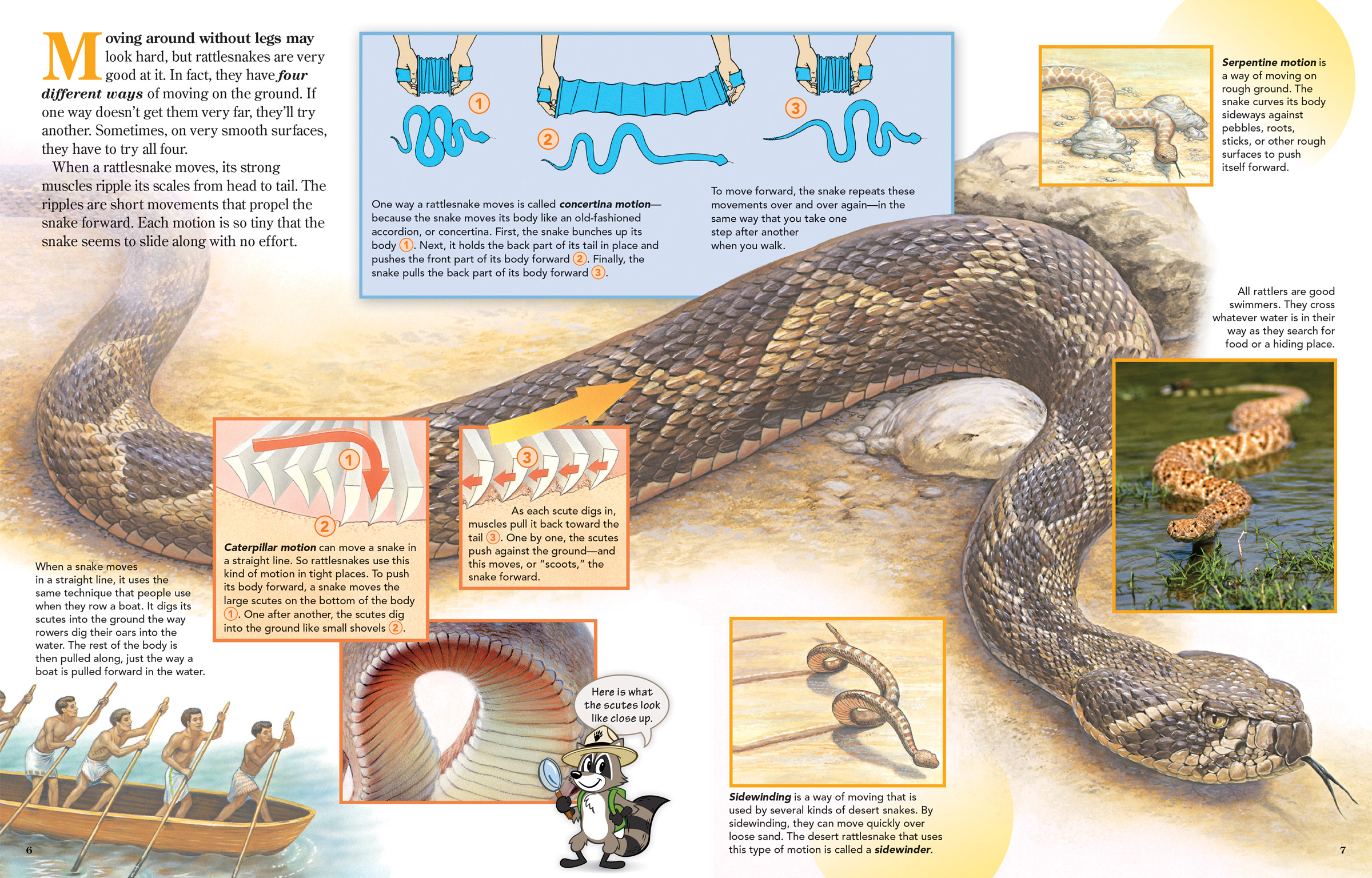
How Snakes Move
ByMoving around without legs may look hard, but rattlesnakes are very good at it. In fact, they have four different ways of moving on the ground. If one way doesn’t get them very far, they’ll try another. Sometimes, on very smooth surfaces, they have to try all four.
When a rattlesnake moves, its strong muscles ripple its scales from head to tail. The ripples are short movements that propel the snake forward. Each motion is so tiny that the snake seems to slide along with no effort.
One way a rattlesnake moves is called concertina motion—because the snake moves its body like an old-fashioned accordion, or concertina. First, the snake bunches up its body. Next, it holds the back part of its tail in place and pushes the front part of its body forward. Finally, the snake pulls the back part of its body forward .
To move forward, the snake repeats these movements over and over again—in the same way that you take one step after another when you walk.
Caterpillar motion can move a snake in a straight line. So rattlesnakes use this kind of motion in tight places. To push its body forward, a snake moves the large scutes on the bottom of the body. One after another, the scutes dig into the ground like small shovels.
As each scute digs in, muscles pull it back toward the tail . One by one, the scutes push against the ground—and this moves, or “scoots,” the snake forward.
Here is what the scutes look like close up.
When a snake moves in a straight line, it uses the same technique that people use when they row a boat. It digs its scutes into the ground the way rowers dig their oars into the water. The rest of the body is then pulled along, just the way a boat is pulled forward in the water.
 Serpentine motion is a way of moving on rough ground. The snake curves its body sideways against pebbles, roots, sticks, or other rough surfaces to push itself forward.
Serpentine motion is a way of moving on rough ground. The snake curves its body sideways against pebbles, roots, sticks, or other rough surfaces to push itself forward.
All rattlers are good swimmers. They cross whatever water is in their way as they search for food or a hiding place.
Sidewinding is a way of moving that is used by several kinds of desert snakes. By sidewinding, they can move quickly over loose sand. The desert rattlesnake that uses this type of motion is called a sidewinder.

